Related Research Articles

Burning Man is a week-long large-scale desert event focused on "community, art, self-expression, and self-reliance" held annually in the western United States. The event's name comes from its culminating ceremony: the symbolic burning of a large wooden effigy, referred to as the Man, that occurs on the penultimate night, the Saturday evening before Labor Day. Since 1991, the event has been at Black Rock City in northwestern Nevada, a temporary city erected in the Black Rock Desert about 100 miles (160 km) north-northeast of Reno. According to Burning Man co-founder Larry Harvey in 2004, the event is guided by ten stated principles: radical inclusion, gifting, decommodification, radical self-reliance, radical self-expression, communal effort, civic responsibility, leaving no trace, participation, and immediacy.
Burning Flipside is an annual effigy burn, display of creative arts, and self-expression of performances staged in Central Texas near Austin. Modeled on and associated with Burning Man, Flipside was the first regional Burning Man event.
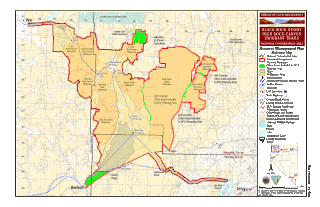
The Black Rock Desert is a semi-arid region of lava beds and playa, or alkali flats, situated in the Black Rock Desert–High Rock Canyon Emigrant Trails National Conservation Area, a silt playa 100 miles (160 km) north of Reno, Nevada that encompasses more than 300,000 acres (120,000 ha) of land and contains more than 120 miles (200 km) of historic trails. It is in the northern Nevada section of the Great Basin with a lakebed that is a dry remnant of Pleistocene Lake Lahontan.

A dry lake bed, also known as a playa, is a basin or depression that formerly contained a standing surface water body, which disappears when evaporation processes exceed recharge. If the floor of a dry lake is covered by deposits of alkaline compounds, it is known as an alkali flat. If covered with salt, it is known as a salt flat.
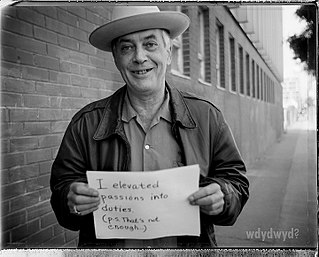
Larry Harvey was an American artist, philanthropist and activist. He was the main co-founder of the Burning Man event, along with his friend Jerry James.

Nowhere is a Burning Man regional event in Spain, the biggest such regional event in Europe. It began in 2004 and is held annually in July in the Monegros Desert, located in Aragon in north-eastern Spain.
Playa del Fuego, also known as "PDF" by its participants, is a regional event inspired by the annual Burning Man festival in Nevada. The event is held in the Mid-Atlantic region twice a year, with the spring event (PDF) being held over Memorial Day and the fall event (Constellation) being held over Columbus Day weekend. Most of the planners and participants come from the Baltimore-Washington, D.C. metropolitan area and surrounding states including Maryland, Virginia, Delaware, Pennsylvania, and New Jersey; though more than a few come from as far away as New England.

A clothing-optional bike ride is a cycling event in which nudity is permitted or expected. There are many clothing-optional cycling events around the world. Rides may be political, recreational, artistic, or a unique combination thereof. Some are used to promote topfreedom, a social movement to accord women and girls the right to be topless in public where men and boys have that right.

Fly Geyser, also known as Fly Ranch Geyser is a small geothermal geyser located on private land in Washoe County, Nevada, about 20 miles (32 km) north of Gerlach. Fly Geyser is located near the edge of Fly Reservoir in the Hualapai Geothermal Flats and is approximately 5 feet (1.5 m) high by 12 feet (3.7 m) wide, counting the mound on which it sits.
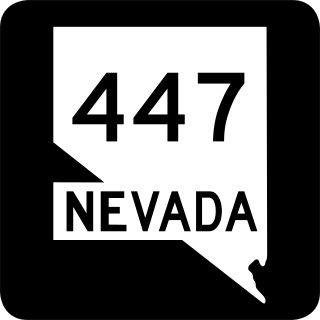
State Route 447 is a state highway in the U.S. state of Nevada. The highway is almost entirely within Washoe County but does for a brief time enter Pershing County, Nevada. The highway connects the town of Gerlach to the remainder of the state via Wadsworth. Though passing through extremely remote and desolate areas of Nevada, the highway has recently gained fame as the primary route to access the Black Rock Desert, the site of the annual Burning Man festival. The state maintained portion ends at Gerlach; however the highway continues as Washoe County Route 447 from Gerlach north to the California state line near Cedarville.
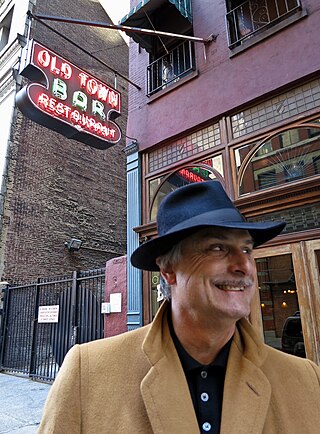
John Law is an American artist, culture-jammer, and neon sign technician. He was a primary member of the Cacophony Society and a member of the Suicide Club. He is also a co-founder of Burning Man which evolved out of the spirit of the Cacophony Society when a precursor solstice party was banned from San Francisco's Baker Beach and merged with another Cacophony event on the Black Rock desert in Nevada. Originally from Michigan, Law has lived in San Francisco, California since 1976, and has maintained the signage and clock face of the Tribune Tower in Oakland, where he also has an office, since 1996.
Kiwiburn is a regional Burning Man event based in Hunterville, Manawatū-Whanganui, New Zealand celebrating principles such as inclusion, radical self-expression, gifting, participative art and culture.
Hualapai Flat is a valley in northwestern Nevada, United States, located northwest of the Black Rock Desert. The two valleys are separated by the Calico Hills. The Granite Range marks the southern and western edges of Hualapai Flat. To the north the valley is constrained by the Granite Range and the Calico Hills. Washoe, Pershing, and Humboldt counties meet in the Hualapai Flat.
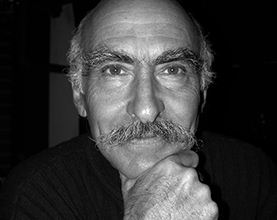
Pepe Ozan (1939–2013) was an Argentine sculptor, artistic director, and filmmaker. He lived in the San Francisco Bay Area for many years, and is known for his lasting influence at Burning Man, an annual experimental arts festival in Nevada, United States.

BMIR 94.5 FM is the unlicensed community radio station for Burning Man, an event held annually in Black Rock Desert, Nevada. BMIR begins broadcasting on 94.5 FM on the playa in the week leading up to Burning Man. Currently, the station hosts more than 40 DJs that produce the programming played over the course of the event.

Trego Hot Springs is located in the Black Rock Desert at the location of Trego, Nevada, a former station on the Western Pacific Railroad. The name "Trego" dates from the 1910s, just after the railroad was built. Previously, the springs had names like Hot Springs, Kyles Hot Springs (1864), Butte Spring, and Butte Hot Spring.

Midburn is a 6-day event held in the Negev Desert in southern Israel.

Old Razorback Mountain is a 5,650-foot elevation (1,722 m) summit located in Pershing County, Nevada, United States.

Burning Man 2023 was a week-long gathering in the Black Rock Desert in Pershing County, Nevada. The 35th Burning Man event, it took place from August 27 to September 4, 2023. An estimated 73,000 people attended the festival.
References
- 1 2 Doherty, Brian (July 2006). This Is Burning Man. Benbella Books. ISBN 978-1-932100-86-0 . Retrieved 13 June 2014.
- 1 2 Zack, Jessica (2016-07-12). "Photographer turned Burning Man on to art". SF Gate . Retrieved 2018-10-25.
- 1 2 Larson, Vicki (2016-06-22). "Woodacre photographer captures Burning Man's 'missing chapter'". Marin Independent Journal . Retrieved 2018-10-30.
- ↑ Kane, Jenny (2016-08-31). " "Emergent Amazement". Reno Gazette-Journal . p. C2. Retrieved 2018-10-17– via Newspapers.com.

- 1 2 "William Binzen: Desert Siteworks, Collection CAE1503" (PDF). Nevada Museum of Art. Archived from the original (PDF) on 2018-10-26. Retrieved 2018-10-25.
- ↑ Raenell, Katrina (2014-08-28). "Burning Man art: out of the dust, in to communities". Reno Gazette Journal . Retrieved 2018-10-17– via Newspapers.com.
William Binzen's "Desert House," created for the project Desert Siteworks, was the first structure-into-sculpture to be used as the central gathering place, prefiguring Center Camp. It was also the first architectonic sculpture besides the Man to be erected on the playa.

- ↑ "Light Fantastic: the culture and craft of neon lighting and its remaining masters". Kodachrome Magazine. No. 3. 2018. Archived from the original on 2018-09-23. Retrieved 2018-10-23.
- "Desert Siteworks @ Oakland Museum Nov 17 2PM". John Law. November 8, 2019.
- ↑ "Desert Siteworks at Trego Hotsprings in 1993" . Retrieved 2018-10-17.
- 1 2 Mathieu, Kevin (2013-03-28). "Desert Site Works" . Retrieved 2018-10-17.
- ↑ Historical Quadrangle Maps, Quadrangle 3-11 (Map). Nevada Department of Transportation. Retrieved February 2, 2023.
- ↑ "Life & Culture Capturing the Artistic Experiment that Inspired Burning Man". Another Man . Retrieved 2018-10-30.
- ↑ Olivier, Bonin (March 2009). "Dust & Illusions. Documentary on 30 Years of Burning Man history".
William Binzen was extensively interviewed for the film, with cross-references from Burning Man organizations' co-founders.
- ↑ Burkes, Summer (2016-07-27). "Essential Burning Man History: William Binzen & John Law talk Desert Siteworks Fri. July 29". Burning Man . Retrieved 2018-10-25.
"An Unintelligible Passionate Yearning Drove Them Out Into The Desert" by John Law ... The Cacophony custom of "leave no trace" and culture of encouraging extreme and intense, collaborative "real world" experience was a perfect complement to Binzen's ideas and the aesthetic sensibilities of the other DSW artists.
- ↑ "Remembering Adrienne Fuzee". 2014-06-14. Archived from the original on 2018-10-30. Retrieved 2018-10-30.
- ↑ "Postcard for Primal Edge, August 4-5, 1994, SOMAR Gallery, San Francisco" . Retrieved 2018-10-30.